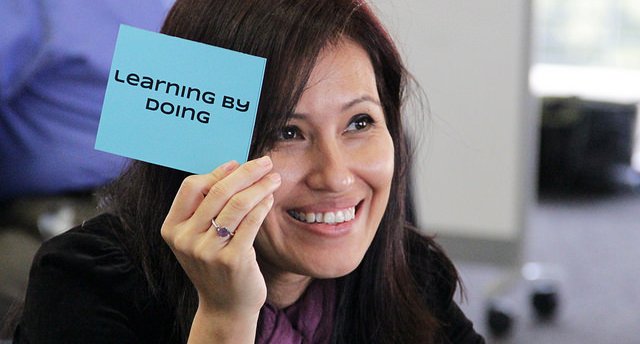
Alizabeth Sanchez and Sandra Pedraza, Professors at Universidad del Turabo in Puerto Rico and Pathways in Innovation co-leads, teach in a country with high levels of poverty, unemployment, government debt, and bankruptcy. Years ago they knew that innovation and entrepreneurship (I&E) could play a role in Puerto Rico’s emergence from economic crisis. But where to start? How do you seed a broad, economy-wide movement toward I&E?
Like fresh-faced entrepreneurs, they took an innovative, bootstrapped approach to integrating entrepreneurship education on campus. Fast-forward a few years, and the end result is that they’ve grown student and faculty excitement, engagement and competency, as well cross-disciplinary interactions. And now a snowball effect is taking place, with more students and faculty engaged in and willing to further grow the I&E ecosystem. The seeds have been planted.
Here are the three low-cost strategies Alizabeth and Sandra employed to integrate I&E on campus.
Strategy 1: Tap Your Network
The professors pulled together a team of like-minded faculty champions to work with them. As part of the Pathways in Innovation program, Alizabeth and Sandra put “strategic doing” at the core of their activities: they started with a coalition of the willing—people able and willing to contribute to the projects in question—and pulled them in as needed.
Strategy 2: Inventory and Leverage Your Resources
Rather than focusing on what they didn’t have, Alizabeth and Sandra focused on what was already available. This helped them determine what might be leveraged to achieve their vision. They identified the following resources already on their campus:
- Puerto Rico Energy Center (PREC): A center at the institution that combines research, tech transfer, education and demonstration to advance Puerto Rico’s energy efficiency.
- Accelerator of Clean Technologies: Offers assistance to inventors and entrepreneurs in the commercialization of their initiatives.
- FabLab at the School of Design: A fabrication laboratory open to Turabo students.
- Multidisciplinary Program for Innovation at the School of Engineering: A multi-disciplinary, multi-year program. Enrolled students complete entrepreneurship and design courses and work on student enterprise teams that operate like real-world private enterprises.
- Center of Incubation and Entrepreneurial Development at the Employment Center: Incubates, accelerates, mentors and funds innovative startups.
Strategy 3: Determine Your Strategy
Alizabeth, Sandra and team realized they could have the greatest impact by getting more students and faculty to plug into the existing infrastructure and programming. Enter the Melting Pot Series, a series of low-cost, high-impact activities designed to maximize engagement and collaboration, and stimulate an I&E mindset. The program included:
- Introduction of I&E content in all freshman courses across disciplines: A module on I&E was integrated into the guidebook used by all professors teaching the freshmen course.
- Connecting students to work on projects across disciplines: Working with faculty that teach project courses in different disciplines, they identified students that wanted to further their projects, but needed collaboration from other disciplines. These informal relationships broke down departmental silos and helped faculty recognize the synergies and benefits of working together.
- Games to teach I&E competencies: Students from across disciplines participated in lunchtime games to foster skills like creativity, problem solving and pitching. In addition to advancing student skills, interdisciplinary relationships were fostered. Other offices on campus provided lunch.
- Video Rocket Pitch Competitions: These low-cost, low-stakes video contests engaged students from across all disciplines. Rocket pitch winners were invited to on-campus pitch contests, which broadened the disciplines engaged in campus contests, too. The Office of Innovation and Commercialization provided prizes of around $400 for the video competitions.
- Faculty training: Ongoing workshops were offered in partnership with the Institute of Faculty Development to introduce faculty from across disciplines to tools and approaches to teach I&E in their classes. The Institute of Faculty Development offers certification as well as marketing and logistical support.
For Alizabeth and Sandra, the secret sauce is understanding what you have and engaging like-minded people. Alizabeth explains, “Many universities struggle with limited or constrained conditions. But I believe in the power people have to make changes. Together there is nothing we cannot do.”
About the author
 Victoria Matthew leads VentureWell’s Pathways in Innovation program. Pathways is a faculty development and institutional change initiative focused on the integration of innovation and entrepreneurship into STEM education. The Pathways network currently includes 50 institutions and over 400 members.
Victoria Matthew leads VentureWell’s Pathways in Innovation program. Pathways is a faculty development and institutional change initiative focused on the integration of innovation and entrepreneurship into STEM education. The Pathways network currently includes 50 institutions and over 400 members.